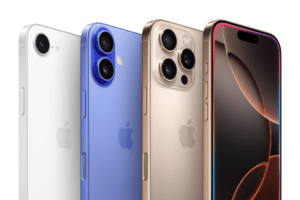In the modern digital era, smartphones contain sensitive personal and financial data. As such, security has become a major priority for consumers when choosing a phone. One of the most important security features is the screen lock system that controls access to the phone.
The two main unlock methods available are fingerprint scanning and facial recognition. Each approach has distinct advantages and disadvantages:
- Fingerprint: Highly secure but can be slow and finicky
- Facial recognition: Convenient but potentially less secure
So which should you choose? With Google’s Pixel phones, you don’t have to choose. Pixel stands out by seamlessly integrating both fingerprint and facial recognition unlocking, giving users the best of both worlds.
The Pixel Difference
While many Android phones offer both facial and fingerprint unlock, they typically require selecting one method or the other. Switching between the two can be a hassle.
In contrast, Pixel phones run Google’s own Android software optimized specifically for Pixel hardware. This allows fingerprint and facial unlock to work together in perfect harmony on Pixel devices.
Convenience Without Compromise
The seamless biometric unlocking experience on the Pixel means you can use whichever method is most convenient at any time. Forgot your mask is on and can’t get facial recognition to work? Just use your fingerprint instead. Hands full so you can’t reach the fingerprint sensor? Your face has you covered.
Other phone makers have attempted to replicate this functionality but cannot match Google’s tight integration of hardware and software. The result is a disjointed experience that lacks Pixel’s seamless convenience.
Enterprise-Grade Security
Convenience is important, but security is paramount. Some facial recognition systems rely solely on the selfie camera and can be easily spoofed.
In contrast, Pixel face unlock uses advanced infrared 3D dot projection combined with AI-powered authentication. This makes it nearly impossible to fool with images or video.
Furthermore, Pixel runs Google’s on-device Titan M security chip to safeguard sensitive data like passwords and encryption keys. so users can enjoy both convenience and confidence.

Google Pixel Unlock Methods Comparison
Let’s take a closer look at how fingerprint and facial unlock work on Google Pixel phones:
Pixel Fingerprint Unlock
- Uses advanced fingerprint sensors for rapid scanning
- Stores fingerprint data securely on the Titan M chip
- Works quickly and reliably even with wet or dirty fingers
- Provides the highest level of security available on Pixel
Pixel Face Unlock
- Uses infrared 3D facial mapping plus AI authentication
- Adjusts to facial changes over time for continued accuracy
- Works quickly at multiple angles and in low light
- Convenient for situations when fingerprint is impractical
Why Google Pixel Leads the Way
It’s clear that Google Pixel sets the standard for seamless biometric smartphone unlocking. But Pixel offers other security and convenience benefits as well:
- Frequent security updates: Pixel phones get monthly Android software and security patches directly from Google.
- Malware protection: Google Play Protect scans all Pixel apps to prevent malware installation.
- Encrypted data: Pixel automatically encrypts data at rest to prevent unauthorized access.
- Remote wipe: Users can remotely wipe a lost or stolen Pixel device to protect data.
When it comes to smartphone security and convenience, Google Pixel is ahead of the curve. The seamless fingerprint + facial unlock experience is a prime example of Pixel’s innovative capabilities.
If keeping your smartphone and its sensitive contents secured with minimal hassle matters to you, then Pixel is a smart choice.















Add Comment